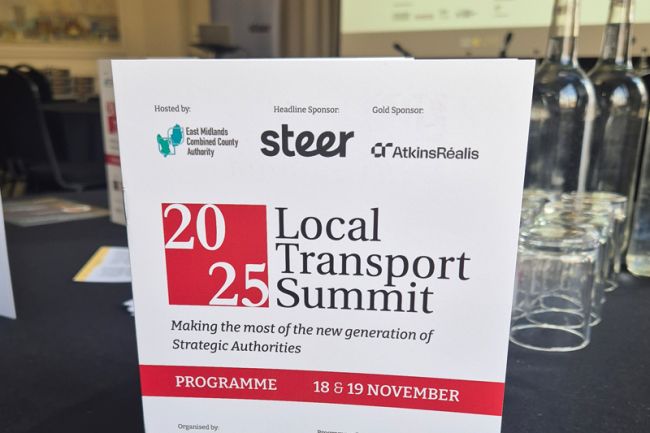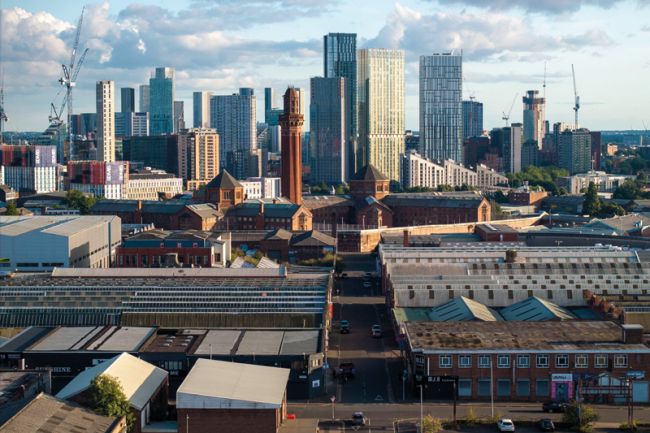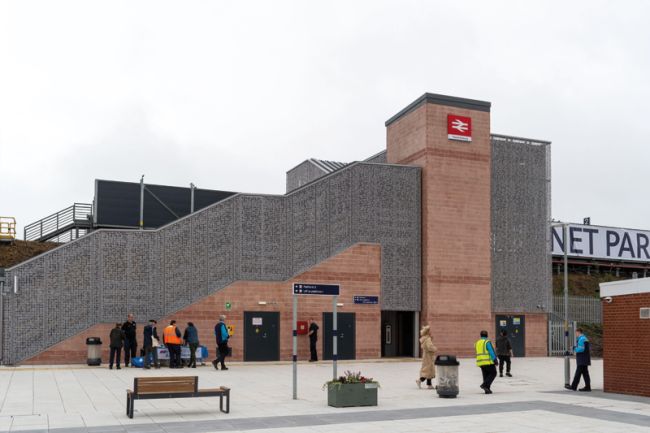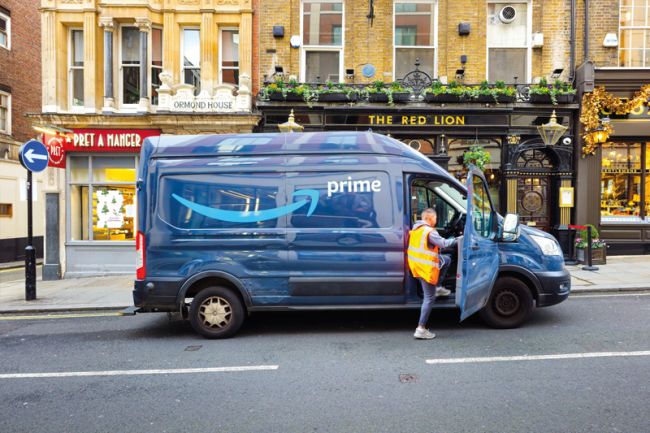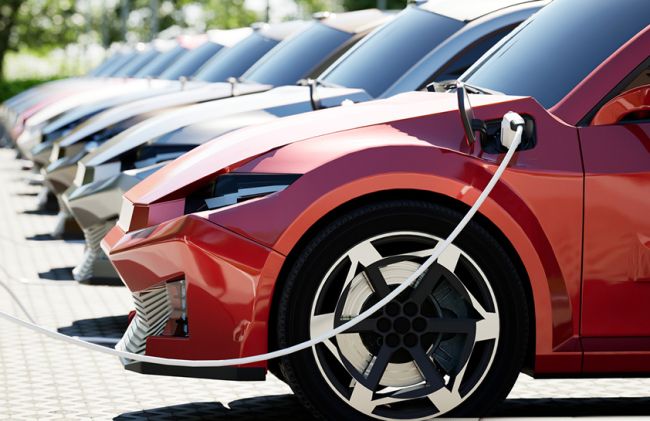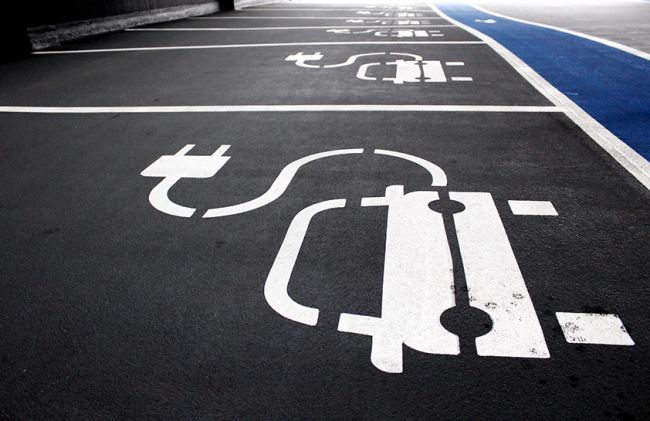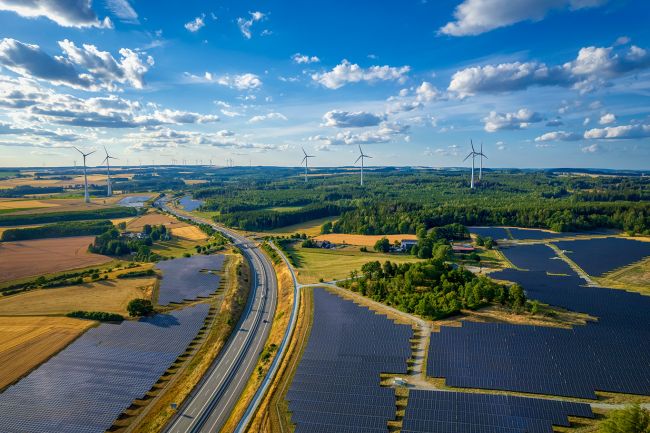Planning transport for the next generation of New Towns: Vertiports or cycle lanes?
As the Labour Government eyes its 1.5 million housebuilding target, how can we ensure these communities work for the future?

As the Labour Government eyes its 1.5 million housebuilding target, how can we ensure these communities work for the homeowners and renters of the future? Following our recent article on the history of New Towns, this latest article explores what considerations transport planners need to make today for New Towns completed in 20 or 30 years.
Over 100 sites have been put forward to host one of the UK Government’s New Towns in what is billed as ‘the largest housebuilding program in the post-war era’.
Despite the best intentions, post-war new towns had mixed results when it came to delivering sustainable new settlements, with empty town centres, poor pedestrian and cycle infrastructure and high car reliance.
When the next new towns are completed, their residents may live very different lifestyles from those that shape development priorities today. Potential buyers and renters of these homes are currently 10 years old; how can we plan for how they will live?
How is planning and building already changing?
Today, the planning system is, to an extent, contending with the idea that homeowners and renters of the future will have fewer personal vehicles per household or perhaps none at all. Already, we see developments that are designed without garages and driveways, freeing up more space for homes, amenities and public space.
Driving is on the wane among young people. In the UK, the percentage of young people holding driving licenses has significantly decreased:
- In 1992 48% of people aged 17-20 year-olds and 75% of people aged 21-29 in 1992 had a driving licence
- By 2024, only 29% of people aged 17-20 and 63% of people aged 21-29 had a driving licence.
Unsurprisingly, a study of car ownership in 2020 showed that areas covering a third of the UK’s population saw a drop in car ownership levels. To compound the long-term trends of insecure employment, greater access to higher education, and urbanisation – in 2024, it was found by AutoTrader that the high cost of insurance and the upfront price of a vehicle were having a further chilling effect. Environmental concerns are also pushing people away from car ownership.
Neighbourhoods designed for a generation less wedded to personal vehicles would possibly reflect European car-free centres of Pontevedra, Spain, or Freiburg, Germany. But while in these cases, car-free status is mostly confined to central districts, with some parking provided on the periphery of the settlement, car-free neighbourhoods may soon exist that ban vehicle ownership for residents or at least prohibit bringing a private vehicle into the area.
To enable this, and a reduction in vehicle use overall, British new towns of the future will have to plan for locally placed amenities and make use of mobility innovations like shared micromobility, create new and make use of existing public transport links and introduce car clubs or similar services for journeys that require access to a personal vehicle. Freight likewise can be revolutionised by introducing sustainable mode last-mile journeys like cargo bikes and mandating more integrated consolidation of goods delivery.
In this way, space can be reimagined, with previous large expanses of tarmac used for homes, green spaces, sustainable drainage and more.
What could happen in the future?
On the more futuristic side of things, emerging (and by now, established) technology could see the reduction of travel altogether. Already, travel outside of the home has been reduced by working from home, on-demand entertainment, next-day deliveries and convenience-culture-enabling apps, all supercharged by the COVID-19 pandemic. The next iteration of this could see augmented and virtual reality reduce trips – and therefore the need for car journeys – altogether.
For shorter journeys – to train stations, hospital appointments and local leisure trips, for example – autonomous vehicles could replace personal cars, with the budding potential of direct rapid transit (DRT) able to move more people at convenience. These on-demand bus services have already been trialled as part of the UK Government’s Future Mobility Zones in areas including the Solent and the West Midlands.
Deliveries, already revolutionised in recent years by zero-emission options in urban centres, could be further reshaped by drone technology that has been approved for trial in Scotland. Meanwhile, vertiports, vertical landings, and take-off pads for air travel could be seen on the edges of developments as a way of quickly moving to urban centres, making the equivalent of a helicopter journey accessible to more people.
The governance of such developments does, however, pose a problem. With any form of new mobility, planners and decision-makers will face new challenges. Will autonomous vehicles cause more congestion? Will their connected systems be able to interact with complex urban streets effectively? Drones must be carefully managed to ensure their safety and how they are integrated within dense urban areas (for example, were they to replace urban deliveries), and vertiports will likely only be used by a privileged few.
In the meantime, we continue to plan for homes and developments with fewer parking spaces on the assumption that, in the future, personal vehicles will be less commonplace. We often find, however, that these homes, designed for the children of today, are rejected during consultation attended by their parents and grandparents and derisked by planners and delivery agents.
Until we find a way to help, the public imagine a car-free life, or a life less reliant on the private car and a way to deliver the new infrastructure required to deliver truly sustainable travel, the new towns of the future look set to befall the same problems as the ones we live in now.


